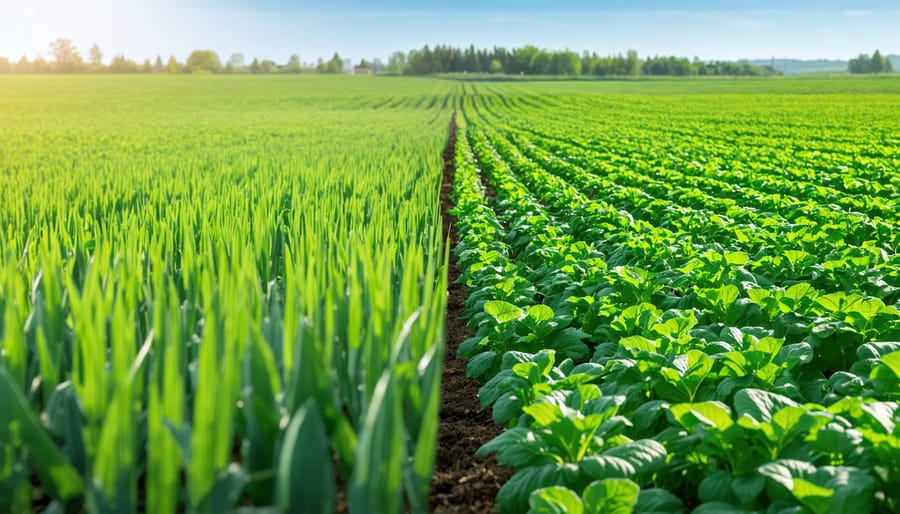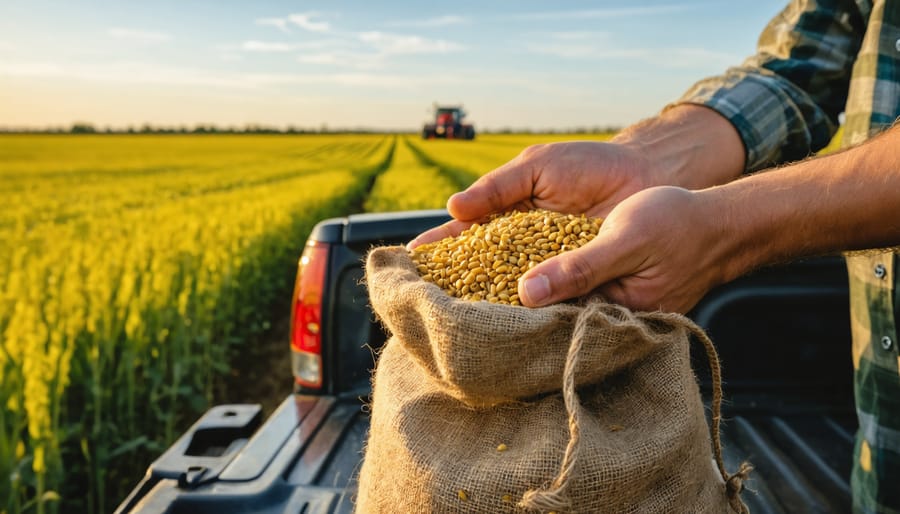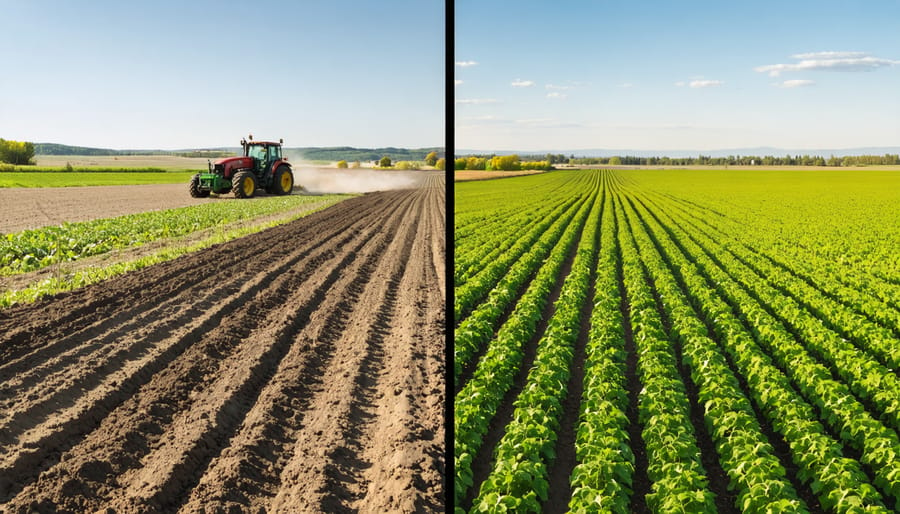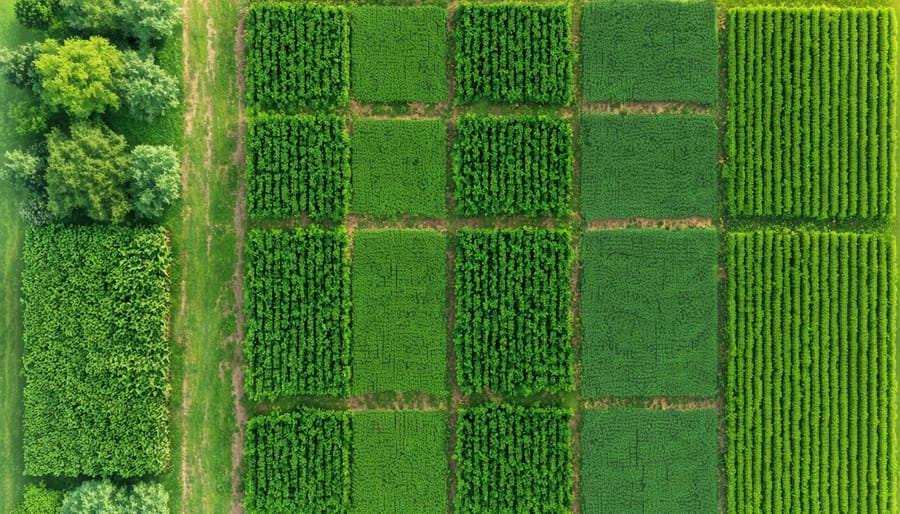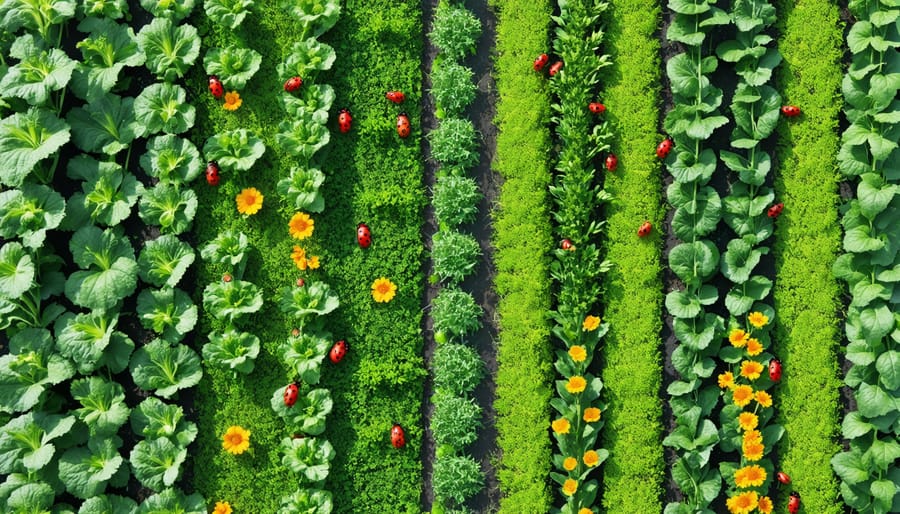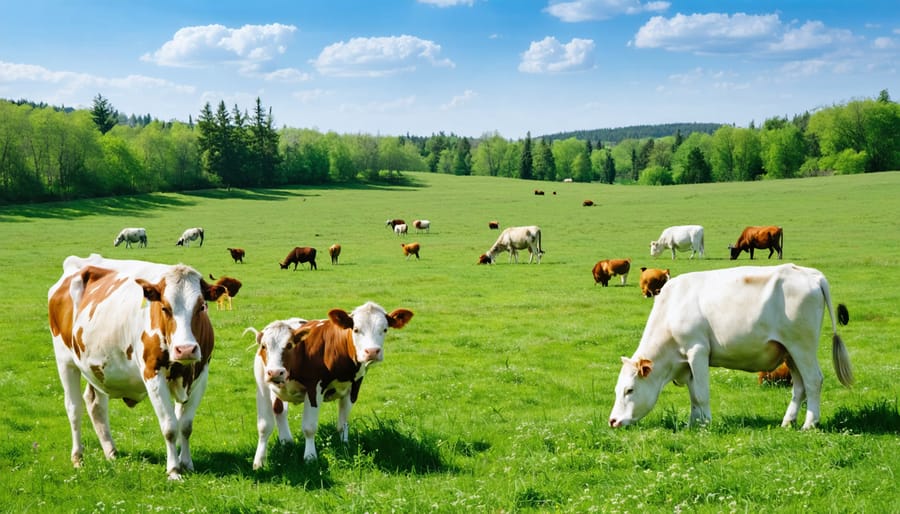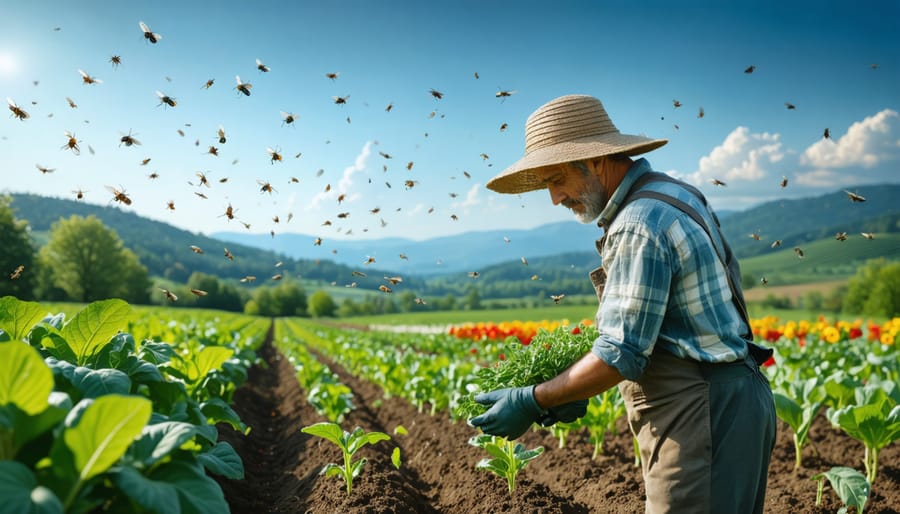Organic farming stands at the intersection of tradition and innovation in Canadian agriculture, where the relationship between pesticides and certification standards continues to evolve. Across Alberta’s diverse agricultural landscape, farmers are navigating complex decisions about pest management while maintaining organic integrity. Recent data from the Canadian Organic Trade Association shows a 23% increase in certified organic operations since 2017, highlighting the growing importance of understanding permissible pest control methods in organic systems.
The distinction between organic and conventional pesticide use extends beyond simple product selection. While conventional farming permits synthetic pesticides, organic certification demands rigorous documentation of integrated pest management strategies, including biological controls, crop rotation, and approved natural substances. For Alberta producers, this means adapting pest management approaches to meet both Canadian Organic Standards and the unique challenges of prairie agriculture.
As global demand for organic products rises and consumers become increasingly aware of food production methods, the stakes for proper pesticide management have never been higher. Understanding the nuanced relationship between organic certification requirements and pest control options empowers farmers to make informed decisions that protect both their crops and their certification status.
Canadian Organic Standards: The Foundation of Pesticide Regulation
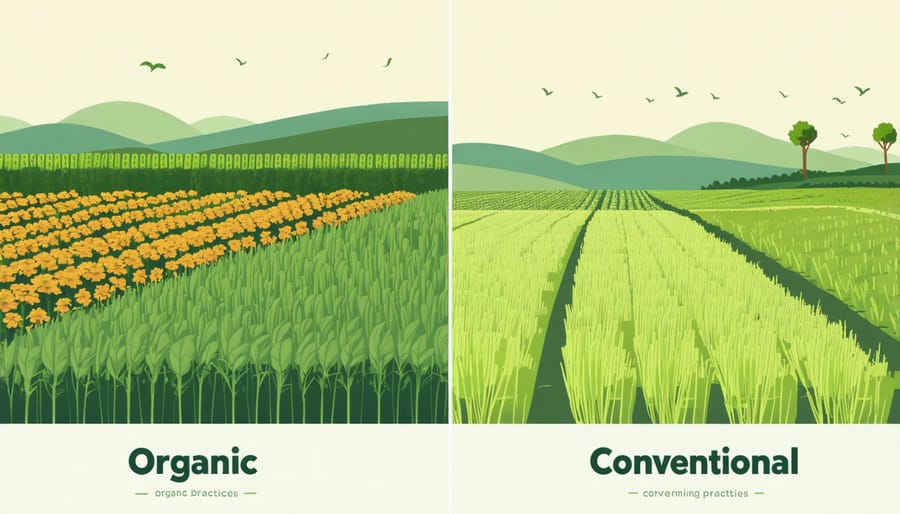
Understanding COR Requirements
Under the Canadian Organic Regime (COR), farmers must follow strict organic certification requirements when it comes to pest management. These standards emphasize prevention as the first line of defense, requiring farmers to implement robust crop rotation, maintain soil health, and encourage beneficial insects before considering any pest control products.
COR-approved pesticides must be listed in the Permitted Substances List (PSL) and can only be used when preventative measures have proven insufficient. Documentation is essential – farmers need to maintain detailed records of pest problems, prevention methods attempted, and any substances applied. These records must demonstrate that alternative approaches were explored before using permitted pesticides.
For Alberta farmers, particular attention must be paid to regional pest pressures like grasshoppers and flea beetles. The COR framework allows for emergency pest control measures, but these require immediate notification to your certification body and thorough documentation of the circumstances. Remember that even approved substances must be used in a way that minimizes impact on the environment and maintains the integrity of organic production.
Alberta-Specific Regulations
Alberta farmers pursuing organic certification must comply with both federal organic standards and provincial regulations specific to our region. The Environmental Protection and Enhancement Act (EPEA) governs pesticide use in Alberta, while organic certification falls under the oversight of the Canadian Food Inspection Agency (CFIA).
Local producers should note that Alberta requires specific buffer zones between organic and conventional farming operations, typically ranging from 8 to 30 metres depending on the adjacent land use. Weather conditions in Alberta, particularly our strong winds and variable precipitation, must be carefully considered when planning organic pest management strategies.
The province offers support through the Organic Agriculture Research and Innovation Program, providing resources for farmers transitioning to organic practices. Alberta’s Pesticide Management Program also maintains detailed records of approved substances for organic production, updated annually to reflect changing environmental conditions and research findings.
For soil building and pest management, Alberta farmers have access to region-specific biological controls suited to our climate, including beneficial insects that thrive in our agricultural zones. Local organic inspector services are available through certification bodies recognized by the province, with inspections typically scheduled between May and September to align with our growing season.
Approved vs. Prohibited Substances in Organic Farming
Natural Pesticides
In organic farming, approved natural pesticides offer effective solutions while maintaining ecological balance. Common options include neem oil, which successfully controls over 200 species of insects and acts as a natural fungicide. Many Alberta farmers report excellent results using pyrethrin, derived from chrysanthemum flowers, particularly for protecting cole crops and leafy greens.
Beneficial bacteria like Bacillus thuringiensis (Bt) have become increasingly popular among Prairie region farmers, especially for managing cabbage moths and other lepidopteran pests. Diatomaceous earth, a fine powder made from fossilized algae, provides excellent control of crawling insects and can be particularly effective in our dry climate.
Local success stories include the Bergstrom family farm near Red Deer, which uses garlic and hot pepper sprays to deter pests while attracting beneficial insects. These natural solutions have helped them maintain consistent crop yields while meeting organic certification requirements.
Other effective options include:
– Insecticidal soaps for soft-bodied insects
– Mineral oils for overwintering pest control
– Kaolin clay for fruit tree protection
– Beneficial nematodes for soil pest management
When applying these solutions, timing and proper application methods are crucial. Many farmers find success by integrating multiple natural pesticides within a broader integrated pest management strategy, adapting their approach based on seasonal conditions and specific crop needs.
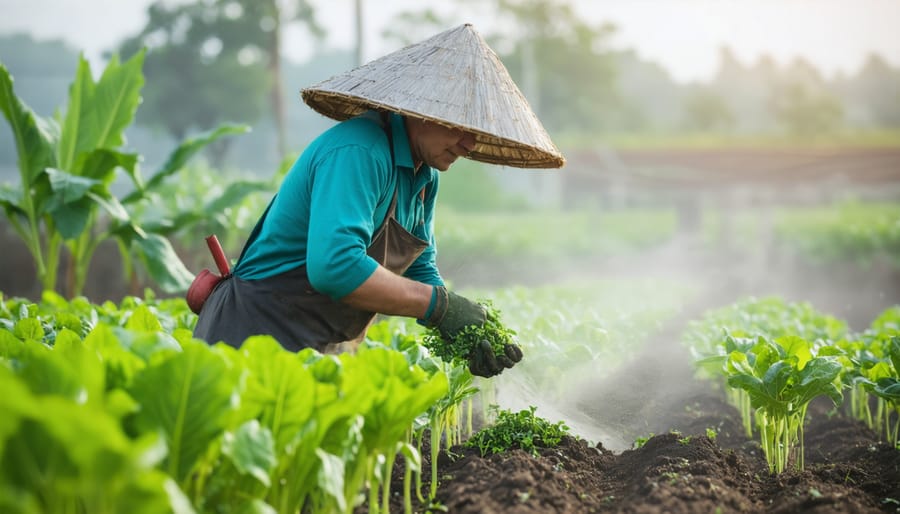
Synthetic Substances
While organic farming emphasizes natural solutions, certain synthetic substances are permitted under Canadian organic standards when natural alternatives aren’t feasible. These substances must meet strict criteria and can only be used as a last resort after other organic practices have been attempted.
In Alberta, common approved synthetic substances include copper sulfate for disease control in fruit crops and hydrogen peroxide for sanitization. However, farmers must document why these materials are necessary and demonstrate their efforts to implement alternative methods first.
Local organic inspector Sarah Thompson notes, “Many Alberta farmers successfully use synthetic substances within guidelines while working toward reducing their reliance on them. It’s about finding that balance between maintaining certification and practical farm management.”
The Canadian Organic Standards outline specific conditions for each approved synthetic substance, including:
– Maximum application rates
– Timing restrictions
– Buffer zone requirements
– Environmental impact considerations
– Documentation requirements
Before using any synthetic substance, farmers should consult their certification body and maintain detailed records of usage. Many successful organic operations in Alberta have developed innovative strategies to minimize synthetic inputs while maintaining productivity. For example, the Miller Family Farm in Red Deer reduced their synthetic copper use by 60% through enhanced soil management practices and resistant crop varieties.
Remember, the goal isn’t to eliminate all synthetic substances but to use them responsibly while continuously working toward more natural solutions.
Verification Process and Documentation
Record-Keeping Requirements
Maintaining detailed records is a cornerstone of organic certification in Canada. As an Alberta farmer, you’ll need to document all aspects of your farming operations, from seed purchases to harvest dates. Keep a comprehensive log of any permitted substances applied to your fields, including organic-approved pest control methods and their application dates.
Essential documentation includes field histories going back at least 36 months, detailed maps of your farm showing buffer zones between organic and conventional areas, and complete input records. Store receipts for all purchased materials, seed tags, and certificates from suppliers confirming organic status.
Create a tracking system for equipment cleaning, especially if it’s shared with conventional operations. Document cleaning procedures and dates to prevent cross-contamination. Many Alberta farmers find success using digital record-keeping systems, though paper records are equally acceptable if well-organized.
Remember to maintain records of crop rotation plans, soil-building activities, and pest monitoring results. These records not only satisfy certification requirements but also help you track your farm’s progress and make informed decisions. Keep all documentation for at least five years, as required by certification bodies, and ensure they’re readily available for annual inspections.
When in doubt about record-keeping requirements, consult your certification body – they’re there to help you succeed in your organic journey.
Inspection Protocols
During organic certification inspections, farmers can expect a thorough review of their operation’s compliance with Canadian Organic Standards. The process typically begins with a documentation review, where inspectors examine your record-keeping systems, including input purchases, field histories, and pest management strategies.
Inspectors will walk through your fields and facilities, checking buffer zones between organic and conventional crops, storage areas for inputs and harvested products, and equipment cleaning protocols. They’ll verify that your pest monitoring systems are in place and that any permitted substances used align with the standards.
Be prepared to demonstrate your soil-building practices and showcase your integrated pest management strategies. Inspectors will ask about your crop rotation plans, cover cropping methods, and mechanical weed control techniques. They’ll also review your cleaning logs and pest control records.
Having organized documentation ready can streamline the inspection process. Keep detailed records of your organic input purchases, application dates, and crop protection decisions. Many Alberta farmers find it helpful to maintain a digital record-keeping system that can be easily accessed during inspections.
Remember, inspectors are there to verify compliance and support your organic journey – they’re valuable resources for improving your operation’s organic practices.
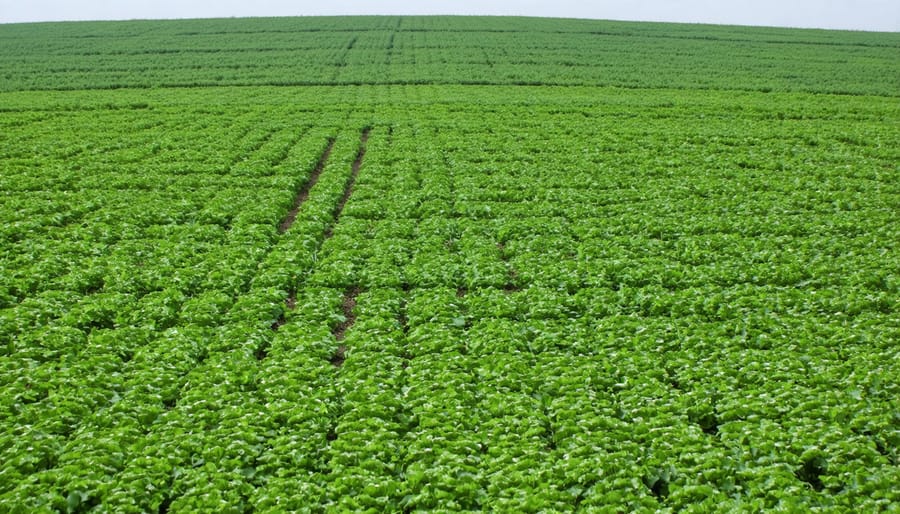
Real-World Success: Alberta Case Study
The Willow Creek Organic Farm, located just outside of Olds, Alberta, stands as a shining example of how sustainable farming practices in Alberta can thrive without conventional pesticides. Sarah and Mike Thompson, who have operated their 640-acre farm for over 15 years, have developed an innovative integrated pest management system that combines traditional knowledge with modern organic solutions.
Their approach centers on three key strategies: crop rotation, beneficial insect attraction, and natural deterrents. The Thompsons maintain a detailed seven-year rotation schedule, which has proven crucial in breaking pest cycles naturally. They alternate between grains, legumes, and specialty crops, significantly reducing pest pressure while building soil health.
“The key is prevention,” explains Sarah. “By maintaining healthy soil and strong plants, we’ve found our crops naturally resist many common pests. We haven’t used a single synthetic pesticide since we started, and our yields have actually improved year over year.”
The farm’s success is particularly noteworthy in their management of flea beetles in canola production, a common challenge in Alberta. The Thompsons developed a unique companion planting system, using mustard as a trap crop around field perimeters. They also maintain permanent flowering borders that attract beneficial insects like ladybugs and parasitic wasps, which naturally control pest populations.
Their methods have resulted in impressive metrics: a 25% reduction in pest-related crop damage compared to regional averages, and soil organic matter levels have increased from 2% to 5.8% over the past decade. The farm’s financial performance has also exceeded expectations, with operating costs 30% lower than conventional farms of similar size in the region.
The Thompsons regularly host field days for other farmers interested in transitioning to organic methods. “We’re proof that organic pest management can work at scale in Alberta’s climate,” Mike notes. “It’s not about fighting nature, but working with it.”
Their success has inspired neighboring farms to adopt similar practices, creating a growing community of organic producers in central Alberta. The farm’s methods have been documented by agricultural extension services and serve as a model for organic pest management in prairie conditions.
Expert Insights: Moving Forward
We spoke with Sarah Thompson, an organic certification specialist with over 20 years of experience in Alberta’s agricultural sector. “The future of organic farming is evolving rapidly, particularly in how we approach pest management,” she explains. “We’re seeing innovative biological controls and enhanced monitoring systems becoming more accessible to farmers.”
Thompson highlights three emerging trends that are reshaping organic practices in Canada. First, the integration of digital technology for precise pest monitoring is helping farmers make more informed decisions about when and how to implement control measures. Second, there’s growing research into companion planting and biodiverse field margins that naturally deter pests. Third, new organic-approved biological controls are being developed specifically for Canadian growing conditions.
“What’s particularly exciting,” adds Mark Chen, a sustainable agriculture researcher at the University of Alberta, “is how traditional knowledge is being validated by modern science. Many Indigenous agricultural practices are proving to be highly effective in pest management.”
Looking ahead, both experts emphasize the importance of community knowledge-sharing networks. “The most successful organic farmers are those who actively participate in mentorship programs and regional farming cooperatives,” Thompson notes. “These connections are crucial for sharing effective pest management strategies and staying current with certification requirements.”
Their advice for farmers considering organic transition? Start with thorough record-keeping and join local organic farming associations. These first steps build a strong foundation for successful organic certification and sustainable pest management practices.
As we’ve explored throughout this article, the relationship between organic farming and pesticide management represents a crucial balance for Canadian agriculture. By implementing integrated pest management strategies and following organic certification standards, farmers can maintain productive operations while meeting consumer demands for sustainable produce.
The key to success lies in taking incremental steps. Start by conducting a thorough assessment of your current practices and identify areas where organic methods can be gradually introduced. Consider partnering with local organic farming associations or connecting with experienced organic producers in your area who can provide valuable insights and support.
Remember that transitioning to organic doesn’t mean abandoning all pest control measures. Instead, focus on building healthy soil, encouraging beneficial insects, and implementing crop rotation strategies that naturally minimize pest pressure. The investment in organic certification can lead to premium pricing opportunities and increased market access.
For Alberta farmers specifically, our unique growing conditions and strong agricultural community provide excellent resources for organic transition. Take advantage of local workshops, extension services, and mentor programs to build your knowledge and confidence in organic practices.
By embracing these changes thoughtfully and systematically, you’ll be well-positioned to meet the growing demand for organic products while maintaining a sustainable and profitable farming operation.

